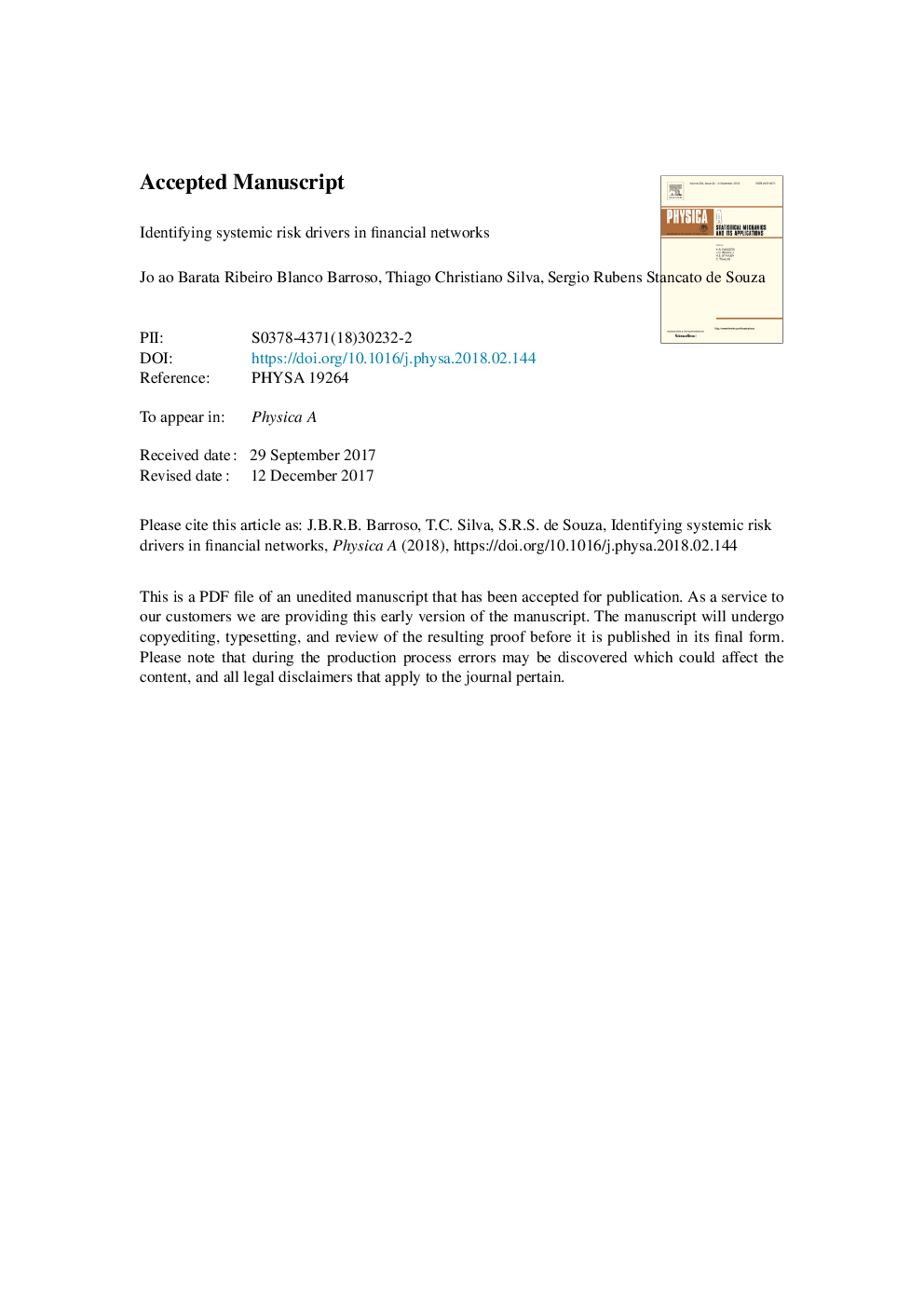| Article ID | Journal | Published Year | Pages | File Type |
|---|---|---|---|---|
| 7375323 | Physica A: Statistical Mechanics and its Applications | 2018 | 39 Pages |
Abstract
In this work, we propose a methodology to decompose drivers of systemic risk that arise due to insolvency contagion in evolving financial networks. There is an ongoing discussion on how network topology and capital buffer influence systemic risk. On the one hand, the network contagion literature tends to emphasize the influence of the network topology. On the other hand, policy works tend to discuss restrictions over the capital buffers of financial institutions. Systemic risk is usually a complex function of both risk drivers and thus isolating the contributive effects of each risk driver to systemic risk is not a trivial task. Our decomposition methodology permits to identify and isolate these effects and can be used for evaluating the effectiveness of policy issues that affect either the network topology or capital buffer of banks. We apply our methodology to the global banking network and find that the network topology explains most of the systemic risk measure's volatility. Additionally, we show that the capital buffer explains the persistent reduction in systemic risk buildup with effects concentrated around the global financial crisis. Our results attest the importance played by both risk drivers in measuring systemic risk.
Related Topics
Physical Sciences and Engineering
Mathematics
Mathematical Physics
Authors
João Barata Ribeiro Blanco Barroso, Thiago Christiano Silva, Sergio Rubens Stancato de Souza,
